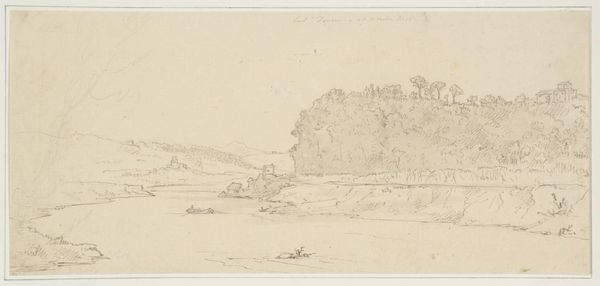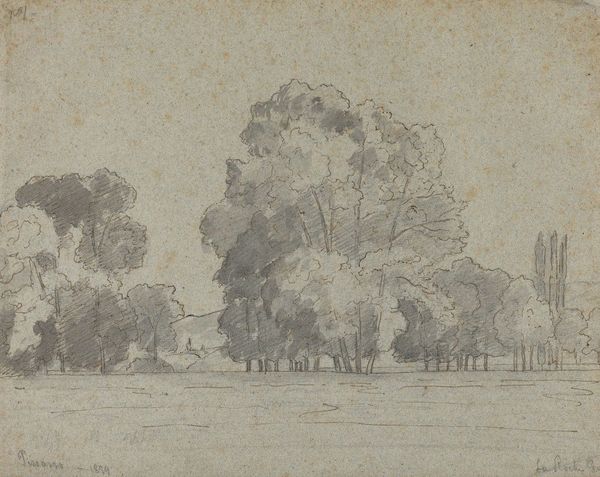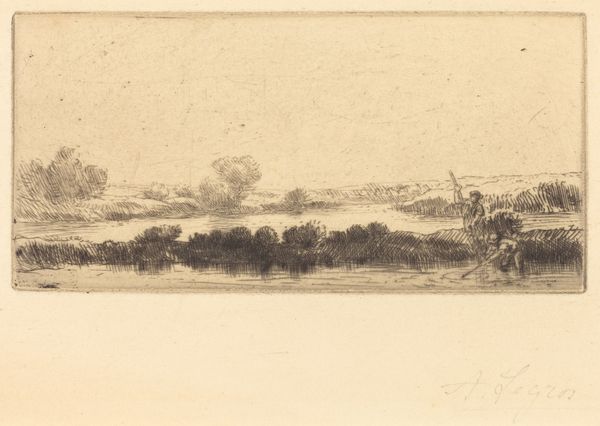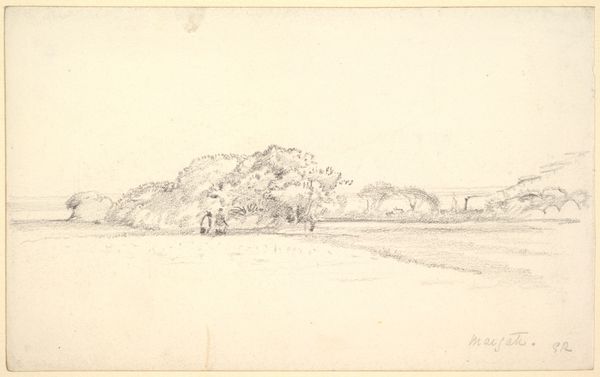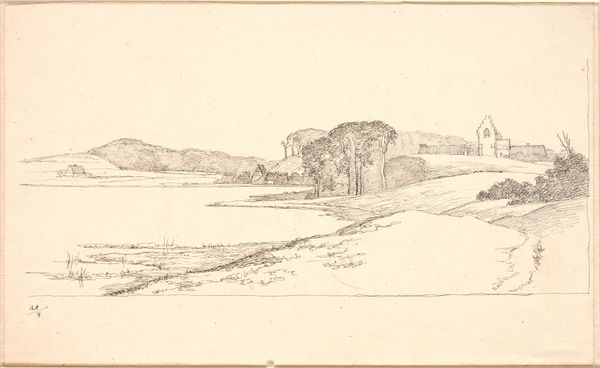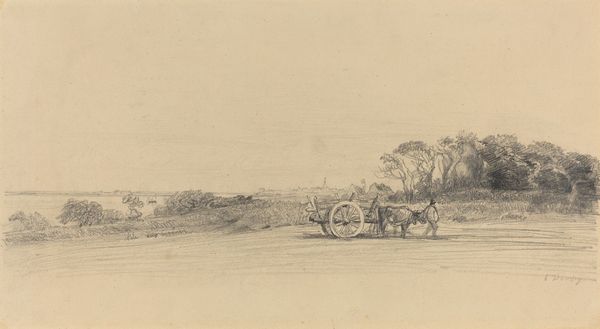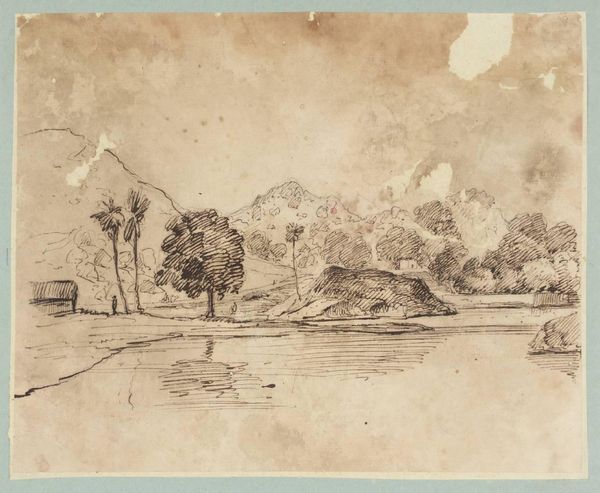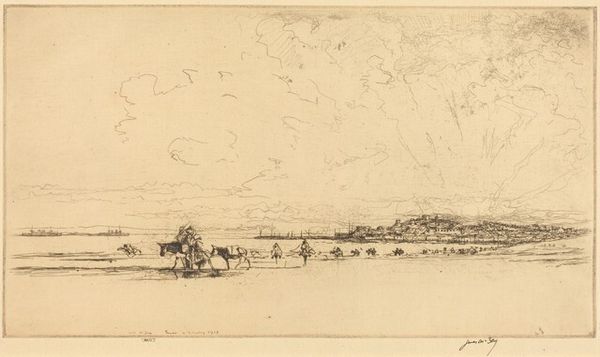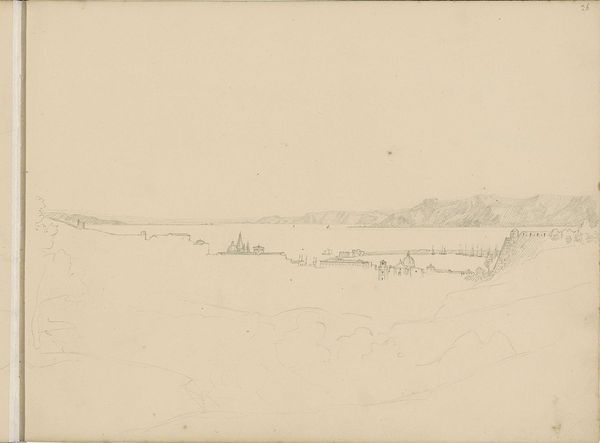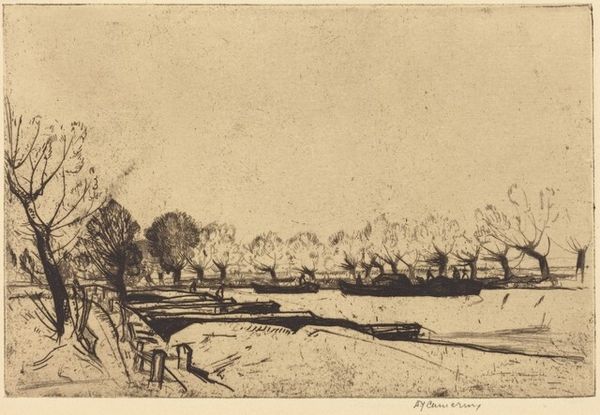
drawing, paper, pencil
#
drawing
#
landscape
#
paper
#
romanticism
#
pencil
Copyright: Public Domain: Artvee
Editor: So this drawing is titled "Tythrop," made in 1817 by John Linnell, using pencil on paper. The delicate lines create a serene, almost dreamlike, landscape. What do you make of its connection to its time? Curator: This drawing offers a fascinating window into the Romantic era's evolving relationship with nature and the English landscape. Consider how landscape art became a crucial expression of national identity and social commentary. It really began taking root after the enclosures acts which radically altered land ownership and use. Linnell, though, complicates this. Editor: How so? I just see a nice view. Curator: Well, look closely. It's not simply a 'nice view,' it's a curated one. The placement of the trees, the hint of a structure in the distance… this reflects a deliberate act of aestheticizing the land. This drawing comes on the cusp of industrialized England and you can almost sense that tension between nature and progress, wildness and control. The very act of framing the scene like this and displaying it, reflects a cultural desire to both celebrate and manage the natural world. Do you think it challenges any conventions? Editor: Maybe it isn't as dramatic as some landscape paintings of the era? Curator: Exactly. Its quietness is itself a statement. How might a powerful landowner have looked at the piece? How might someone displaced by Enclosure? It provokes contemplation about who gets to define beauty and for what purpose. Editor: I see what you mean. It's not just a pretty picture; it's a reflection of the societal shifts occurring at the time. I didn't catch that at first. Curator: Absolutely, it reminds us that art never exists in a vacuum.
Comments
No comments
Be the first to comment and join the conversation on the ultimate creative platform.

